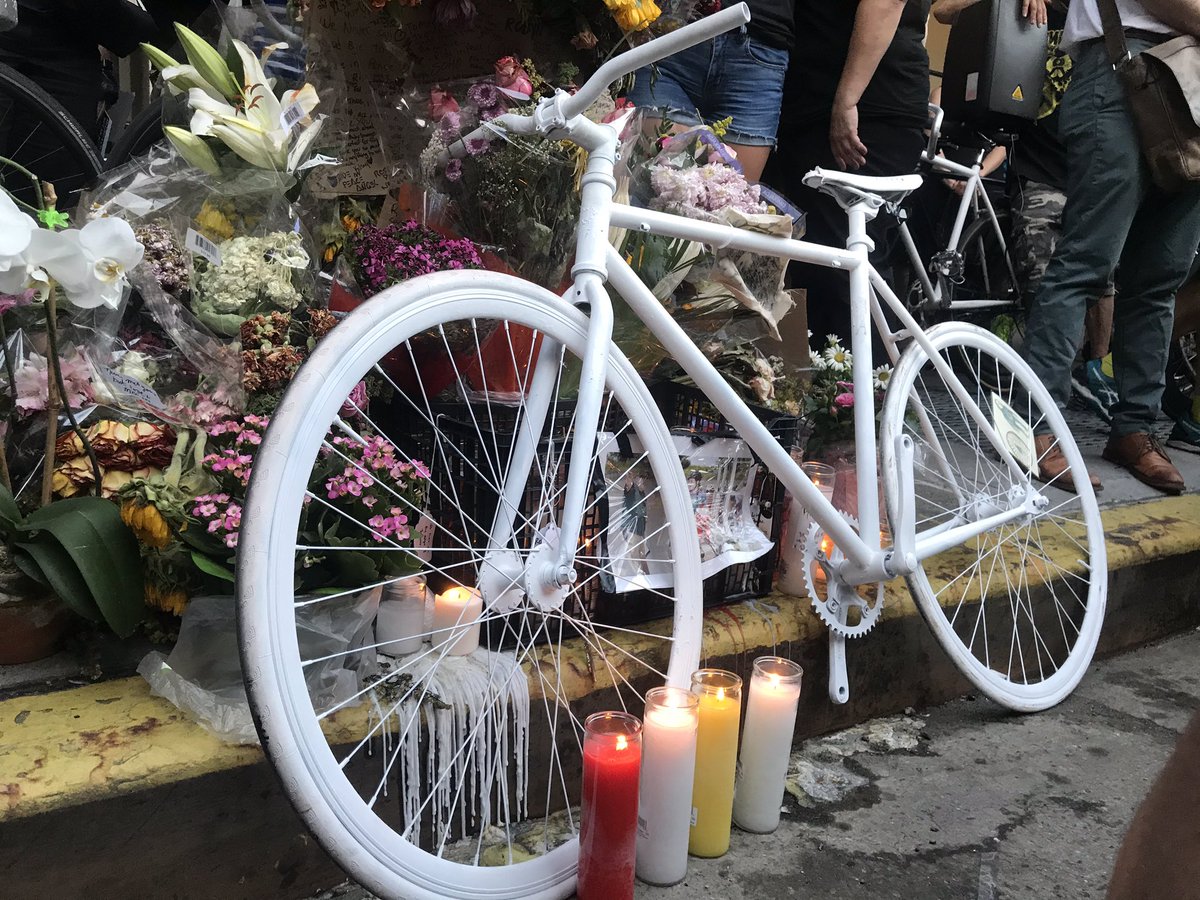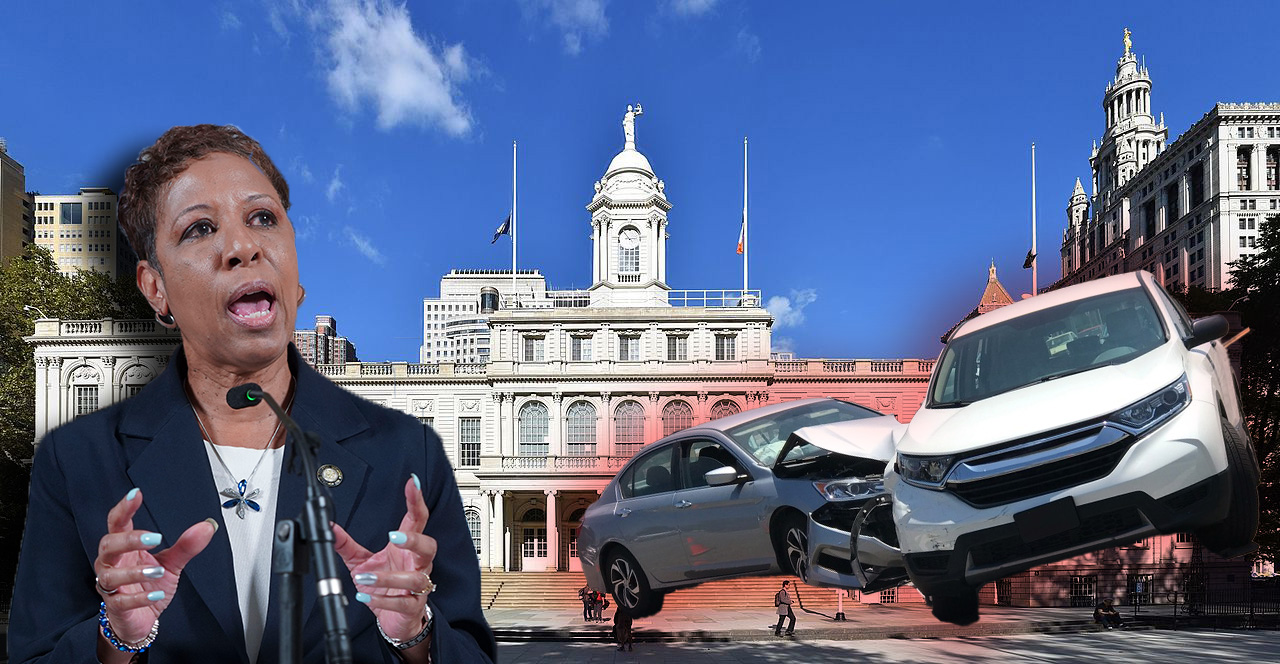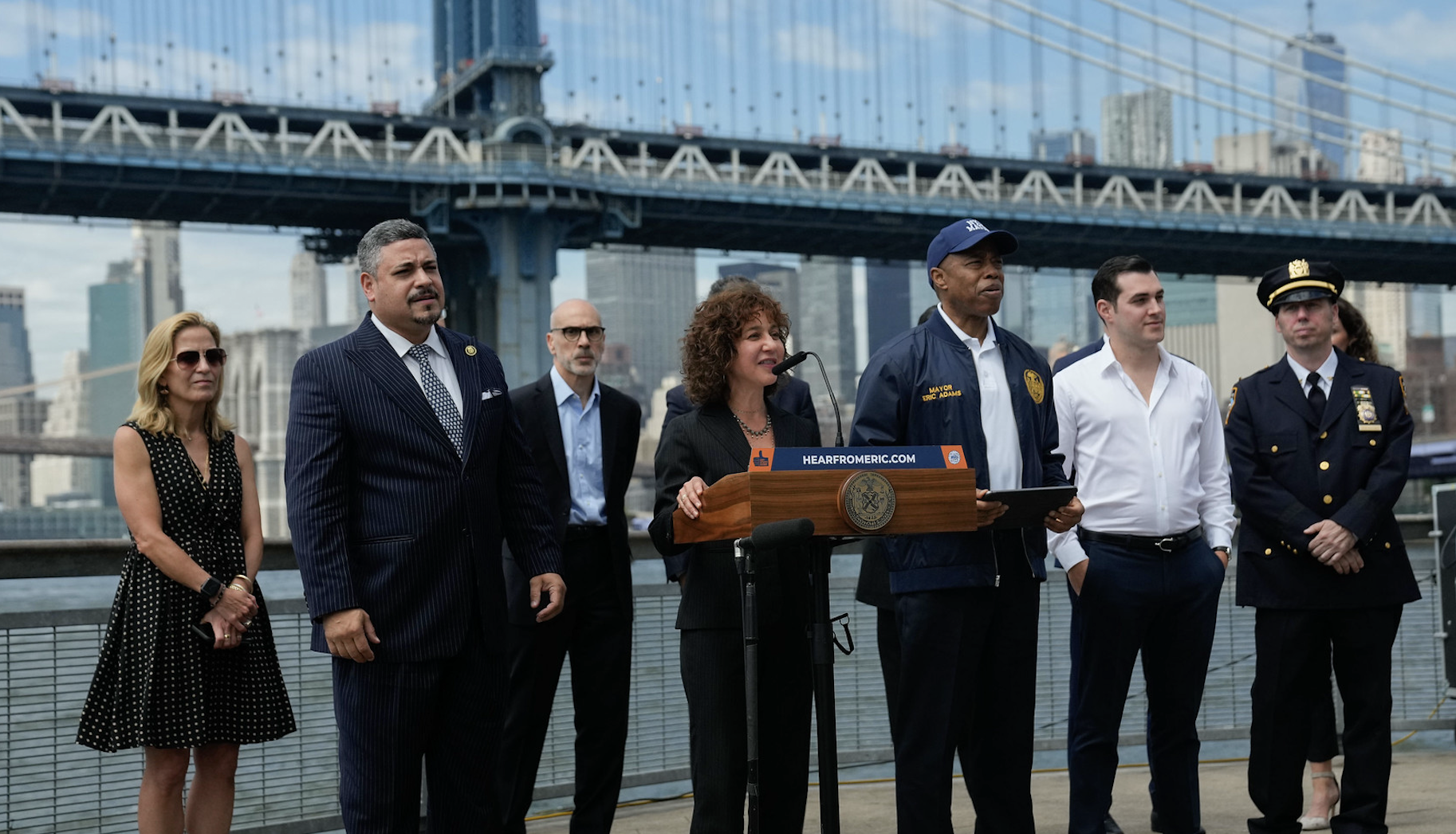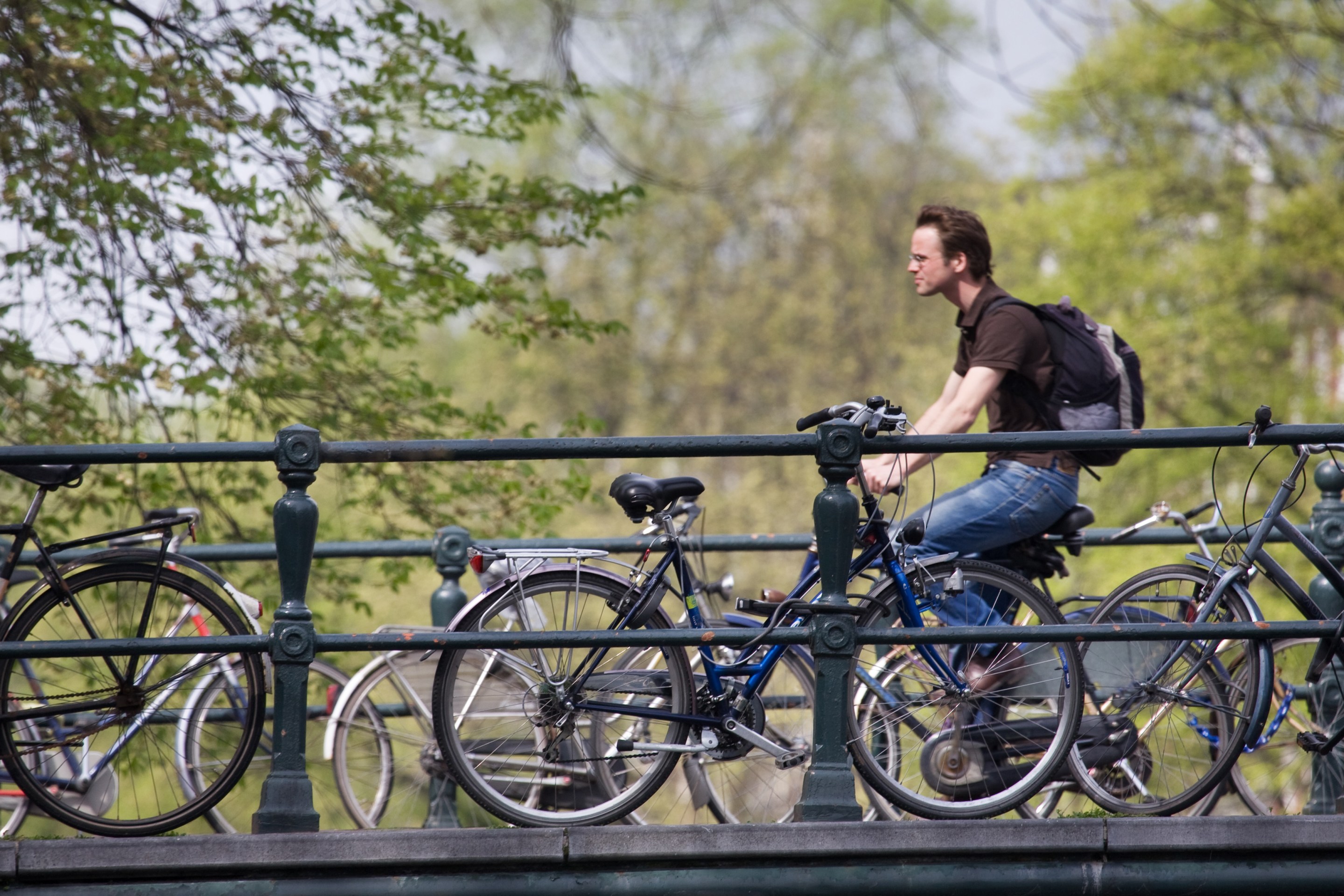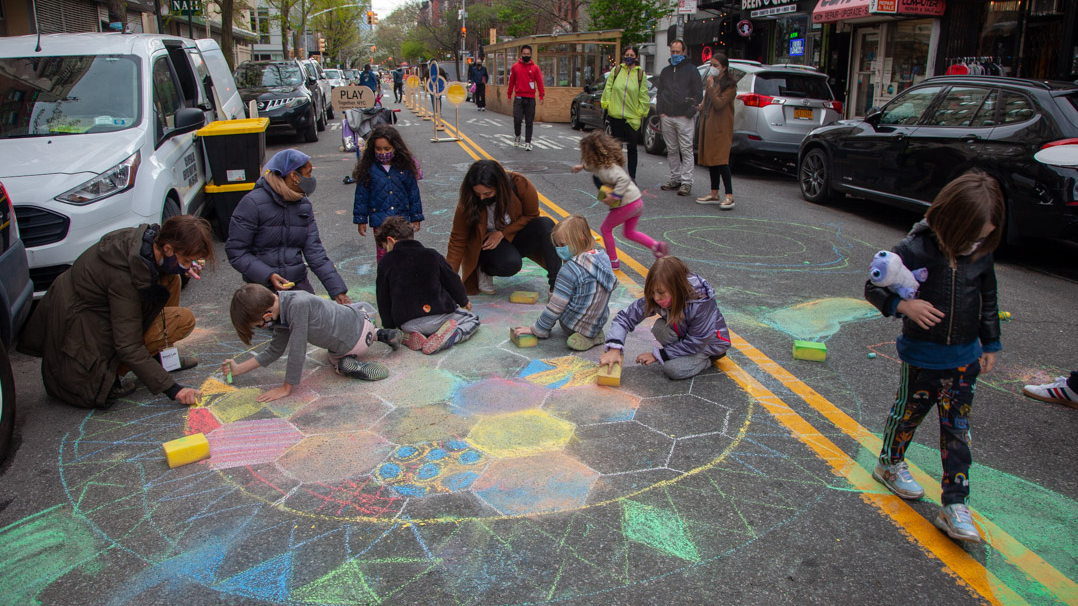Mr. Mayor, you've lost CitizenKuv — and, quite possibly, tens of thousands of cyclists like him.
"I have been biking in the city for most of my life and I've stopped because I'm scared," said the Midwood resident and cycling advocate, who blogs under a pseudonym out of fear of reprisal from drivers. We're five years into the Vision Zero era and, yes, fatalities are down, but anxiety is not.
"You can really feel the increase in reckless behavior on the road," added CitizenKuv, who is calling for cyclists to take back the streets. "I've found myself riding so much less than I usually do, it's been tapering down. It's sad because cycling has been the way to get around for most of my life."

If Kuv is afraid to bike as frequently as he once did, there are thousands, if not tens of thousands of other, less-experienced or would-be bike riders who are declining to take to the streets because the streets remain too damn mean. After a substantial rise in regular bike-riding during the Bloomberg administration that continued into Mayor de Blasio's first term, the city's own statistics show that bike riding has flattened.
In 2017 — the last year cited in the city's most recent biking report — only 739,000 New Yorkers said they rode a bike “several times a month," a number that represents just 12 percent of the adult population of the city. Worse, that number is down 4 percent from the previous year — the wrong direction in a city whose mayor claims he wants to boost cycling.
In addition, the number of cyclists using the four East River bridges every day — a crucial indicator of the strength of cycle commuting — has dropped seven percent since hitting a high of 22,626 riders on the average day in 2016. Seventy six percent of New Yorkers say they would never ride a bike in this town.
And, of course, those prior ridership statistics are just one part of the story. This year's most important statistic is not reflected in the past data, but it's published in blood for everyone who even considers riding to work: 15 cyclists have been killed this year on New York City streets, up from 10 all of last year. There is simply no denying that the death toll has inhibited many riders.
"I love riding bikes, bikes are my life," Shane Ferro tweeted last month — before three cyclists were killed in the span of seven days. "I wish I could be a bigger advocate for more people on bikes in the city, but the truth is when people tell me they don't commute by bike because they don't feel like it's safe I say 'same.'"
was planning to bike around Brooklyn this morning (doctor, haircut) but won't. feeling scared and sad about all of this carnage. won't be a permanent thing, no way, but today feels fragile https://t.co/Xinb9mIN9K
— Emma Whitford (@emma_a_whitford) July 2, 2019
New York is outpacing other U.S. cities such as Los Angeles, Chicago and Portland, Oregon, where bike commuting trips top out in the 20,000-per-day range. But the Big Apple is withering when compared to other world capitals, where aggressive leadership has added far more protected bike lanes and declared whole sections of the city off-limits to cars.
In London, bike riding is soaring, with over 900 million bike miles traveled in 2018, likely far more than New York, which gives statistics only in total number of trips, not distance, at 178.8 million in 2017. Cyclists in the British capital rode an average of nearly 2.5 million miles per day last year, up 5 percent from the previous year, according to city figures.
If cycling is declining in New York City, it will have a ripple effect because many cyclists say they get a strength-in-numbers feeling when bike riding is on the rise. But it's the "De Blasio-22": Cyclists will ride less if they don't feel safe, but the city will be less inclined to build more protected infrastructure if cycling declines. Left in the breach are plenty of would-be riders.
"I'd take more discretionary trips if I could count on a regular network of protected bike lanes," Chas Stewart, an occasional cyclist told Streetsblog. Stewart said he specifically will avoid riding from Astoria to his job in Manhattan because of safety concerns along Second Avenue, where a southbound protected bike lane suddenly disappears at 43rd Street and doesn't return until below the dangerous car entrance to the Queens-Midtown tunnel. Since Jan. 1, 2018, there have been 472 crashes along that mere nine-block stretch, resulting in injuries to 17 cyclists, 38 pedestrians and 44 motorists, according to Crashmapper.
Everyone knows it's a murderstrip. But the city does not act. And that sends a message to cyclists that cars get priority at some of the most dangerous places on earth.
"There are so many bewildering intersections and junctions out there that also look vaguely like a meat grinder, and they pop out of nowhere in unfamiliar parts of the city," Stewart said.
Citi Bike has been a bright spot for cycling, with the bike share system racking up 17.6 million trips last year, but many users are tourists. Many would-be regular riders are deterred — even when they don't even pay for the service.
"I have a free Citi Bike membership through work and decided to try it a month ago," said Brooklyn resident and rookie cyclist Megan Magray. "But within a few minutes of being out, I got cut got off by a car and banged into a parked car." The fear of car drivers still keeps her off the road. "The driver who cut me off was literally just heading towards a red light. There was zero reason for them to swerve. I don't know how cyclists do this — I'd probably murder someone if I didn't get killed first."
Cyclists are most likely to give up regular riding because they don't trust drivers to follow the rules — or even think about the presence of cyclists on streets that many drivers think are exclusively their space. Zoraida Palencia took her first New York City bike ride in June, using in a painted bike lane in Bedford-Stuyvesant, only to discover what longtime riders barely even notice any more: all painted lanes in this city are de facto parking lanes.
"I was assuming that because there was a bike path no one would park in it or drive in it," she told Streetsblog. "I've learned otherwise since then, obviously cars are going to be parked there. [Drivers] really don't see me. My helmet is bright pink and I have a bright backpack, I have bright colors, and they just act like I'm not there. I thought my protection was this stupid little paint, if we're following the traffic rules you're not going to cross the line."
Palencia is proof that some people are still willing to continue giving cycling a try, but even in these cases, the city's lack of urgency to make a truly protected network of bike lanes is putting people at risk. Palencia said she was shocked to learn that the city could build parking or concrete-protected lanes as well, which she said she hadn't come across on her rides. "Those things exist? I thought I was in a protected path. Fuck yeah, I'd feel safer with a barrier. They're not around in my neighborhood!"
Most disheartening is that even in the midst of a rise in cyclist and pedestrian deaths this year, city leadership still unabashedly proclaims that its mission is to make sure drivers are not adversely affected by roadway reconfigurations that city statistics show are actually safer for all road users.
"We do our best to balance the different needs and to have as little effect on all the road users so the street operates at the same level it did before we put the bike lane in," Department of Transportation Commissioner Polly Trottenberg recently told Streetsblog.
How bad is the fear? None other than Transportation Alternatives' Deputy Director Ellen McDermott recently wrote about her discomfort in unprotected bike lanes for Streetsblog. Her husband, Christopher Bonanos, shares her concern.
"It's mostly the intensity of car traffic," said Bonanos, a Midtown resident. "Ellen and I live in Midtown, facing an avenue, so you step off our curb and you are basically on a major highway. It's not so much bad drivers — although bad drivers scare me, sure — as it is the sheer number of them. Our street is just full of cars, all the time. I was coming home in a cab a few nights ago and I literally got stuck in traffic at 10:30 p.m."
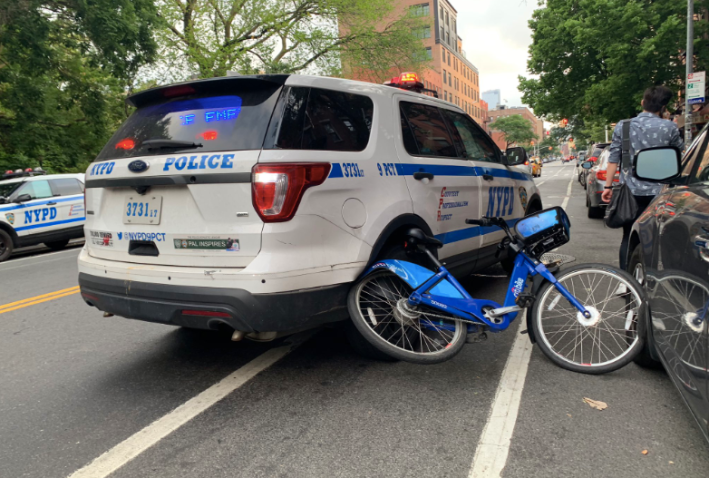
So what is to be done? The bloody beginning to 2019 — with 15 cyclists and 53 pedestrians dead already — did prompt Mayor de Blasio to order the NYPD and the DOT to devise a bicycle safety strategy. The NYPD said it would conduct a three-week ticketing blitz against reckless drivers — but the blitz has also resulted in many tickets to cyclists and a horrifying incident in which an NYPD cop used his SUV squad car as a battering ram to take down a defenseless Citi Bike rider who had allegedly run a red light and was biking with earphones. On Monday, NYPD Commissioner O'Neill and Mayor de Blasio sent a discouraging message of safety to all cyclists by saying they supported the cop's use of deadly force in that instance.
Months of outrage will culminate on Tuesday night, when Transportation Alternatives hosts a "die-in" to focus attention on the bloodshed on our streets. Mourners will certainly grieve over the loss of Aurilla Lawrence, Devra Freelander, Robyn Hightman, Robert Spencer, Ernest Askew, Victor Ang and many others who were killed this year.
But what they will also be saying, even as they lie silently next to their bikes in Washington Square Park is this: "Mr. Mayor, we don't feel safe."
